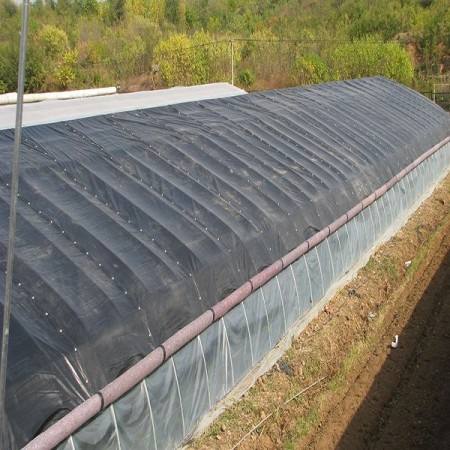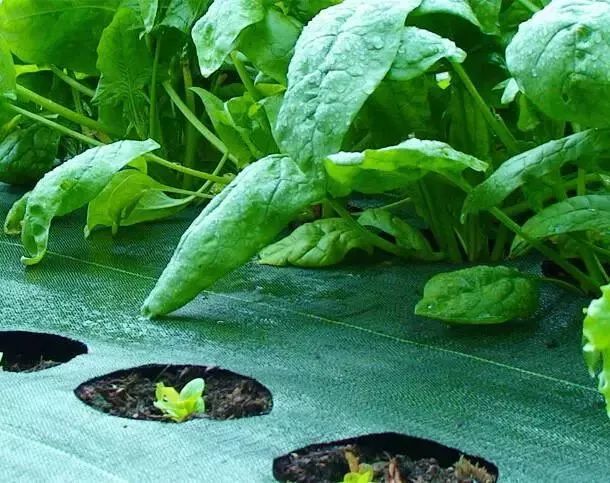



How does the non-woven masterbatch promote the non-woven fabrics in the agricultural field? And listen to Xiaobian.
In recent years, a kind of non-woven fabric widely used in construction, packaging, medical and health, and daily consumer goods is being applied to vegetable, flower, rice and other seedlings and tea and flowers to prevent freezing damage, replacing and making up for plastic film covering insulation. Insufficient.
What are the advantages of non-woven fabrics for agriculture?
As a new type of covering insulation material, non-woven fabric is used in greenhouse vegetable production and has the following advantages:
1, insulation. The non-woven fabric has a lower transmittance for long-wave light than a plastic film. Because the heat radiation in the nighttime radiation area mainly depends on long-wave radiation, the coverage insulation effect is outstanding.
2, breathable and humidity control. The non-woven fabric is laid up in a mesh shape by filaments, has a high void ratio, is breathable, permeable, and automatically adjusts the humidity.
3, shading and cooling. Covered with colored non-woven fabric, it has a shading and cooling effect. Different colors of non-woven fabrics have different shading and cooling effects. The blackout effect is better than yellow and yellow is better than blue.
4, anti-aging. The agricultural non-woven fabric has been subjected to anti-aging treatment, and the thicker the fabric, the lower the strength loss rate.

After the application of vegetable farmers, non-woven fabrics are mainly used in the production of vegetable greenhouses in the following aspects:
Used as the "two-way" insulation material at the bottom of the grass. Many shacks' sheds cover not only the grasshoppers, but also a layer of non-woven fabric at the bottom of the grasshoppers. According to the introduction of vegetable growers, by adding “two-way” insulation materials (non-woven fabrics), the insulation performance of the greenhouse can be significantly improved, which is 2°C-3°C higher than that of simply covering the grasshoppers, which is conducive to vegetable growth. In addition, the application of non-woven fabrics on the sheds using the roller blinds also protects the grasshoppers and extends their service life.
Used as a "slope protection" rainproof material on the back wall of the greenhouse. Sewing together with a plurality of non-woven fabrics to wrap the entire back wall and fix it with steel wire to reduce heat loss on the back wall; prevent rain and snow, protect the wall; cover weeding and reduce pests and diseases into the shed.
Other applications. Used in the production of early spring arched watermelon covered by multi-film, the non-woven fabric can be directly covered on the small arch shed in the arch shed, and the effect of heat preservation and cold prevention is outstanding.
Specific application of non-woven fabrics in agriculture
Transplanting and planting of garden trees
Before the large trees and small seedlings are planted, the non-woven fabrics can be planted in the tree pits and then planted with nutritious soil. In this way, the survival rate of the garden trees is high, and the water retention and fertilizer conservation.
Covering the winter greenhouse and open field nursery with floating surface
It prevents wind blowing and increases temperature. On one side of the seedbed, the non-woven fabric is compacted with soil, and the other side is compacted with bricks and soil. Bamboo or thick iron wire can also be used to make a small arch shed. The non-woven fabric is covered on the top, and the surrounding is covered with brick or soil.
Covering vegetables and flowers, you need to shine more sunshine, so that you can expose it in the morning and cover it in the evening. As a floating surface covering, the temperature of 10 cm from the surface can be increased by about 2 ° C, the ground temperature is increased by 1-2 ° C, and the covered vegetables can be listed 5-7 days earlier, and the yield is increased by about 15%.

For canopy
In the greenhouse and greenhouse, a non-woven fabric is used as a ceiling, and the distance between the ceiling and the plastic greenhouse is 15-20 cm. An insulation layer can be formed to increase the temperature inside the greenhouse by 3-5 °C, open during the day and close at night. Closed and tight is effective.
For heat preservation
Covered outside the small arch shed, instead of straw curtain insulation, it saves 20% of the cost compared with the straw curtain, and the service life is greatly extended. It can also be covered with a layer of non-woven fabric on the small arch shed, and then covered with plastic film, which can raise the temperature by 5-8 °C. .
For shading
Covered directly on the seedbed with non-woven fabric, exposed in the morning and exposed in the evening, it can effectively improve Qi Miao and whole seedlings. Vegetables, flower seedlings, and medium seedlings can be covered directly on the seedlings in summer.
Reduce freeze damage
Before the onset of the cold wave, crops such as tea and flowers that are susceptible to freezing damage are directly covered with non-woven fabrics, which can effectively reduce the damage caused by freezing damage.
I believe that in the future, non-woven fabrics will be tapped into more applications in agriculture. The non-woven fabrics are multi-functional and high-quality development thanks to the non-woven masterbatch, which makes the non-woven fabric more stable and more versatile. .

Ruize focuses on the development and production of high-quality, multi-functional non-woven masterbatch, and is committed to breaking through the new heights of the industry and helping the non-woven industry to flourish. Choose Ruize, colorful!